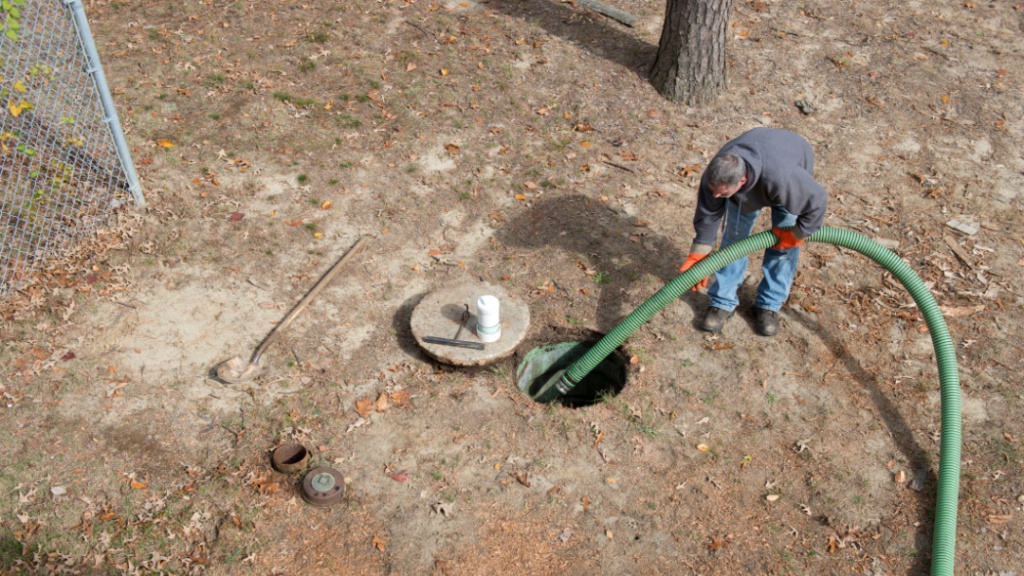By Dave C. Oleson, M.S., EMT-P
I recently needed a septic tank pump-out at my home. I pulled up the information for the service company I used last time. I recalled the interaction: pleasant, mostly on time, competitively priced, and did a good job. No brainer. I made the call and scheduled the appointment. The result was no call, no show. Not once, but twice. After calling a second company with no return call, I held my breath, and called yet a third company.
This time, a pleasant lady answered on the second ring and immediately wished me a good day and asked a question that took me by complete surprise. “How is your day going?” and “How can I be of service to you today?” The effect of her voice was immediately disarming and instantly forced a change in my otherwise gloomy attitude.
Teaching Customer Service in EMS
When on the receiving end of exemplary customer service, it should make us look at our own profession. For those of us who chose public safety – EMS – as our career profession, I bet this topic wasn’t included in your EMR, EMT, or paramedic curriculum. It certainly was not in mine. Arguably, customer service in public safety could be viewed as the pinnacle of what we do each and every day while on the job – ensuring customer satisfaction while delivering exceptional medical care.
”Arguably, customer service in public safety could be viewed as the pinnacle of what we do each and every day while on the job – ensuring customer satisfaction while delivering exceptional medical care.
The National Standard Curriculum for all levels of EMS isn’t completely inclusive of relevant and emerging topics. The onus is on the educational institution to deliver some form of meaningful exposure to topics like customer service, death notification, PTSD, etc. All of which are critical to performing our jobs and are essential to longevity in our careers.
So how do we teach customer service? Should it be a lecture, lab, or combined experience? Simulation-based? Or just let them experience it in the field during their short externship and glean something about – probably – how to not deliver good customer service?
For those reading this who think this should be a classroom-initiated discussion, followed by controlled lab (simulation) experience prior to field, I say “right-on!” Why leave it to chance with their brief externship?
Many factors can lead to a lack of customer service training for EMT students:
- lack of preceptor training,
- low-to-no call volume to measure customer service, and
- poor examples of service delivery from burned-out employees.
All of this leads to a scarring effect on a susceptible, green, and very impressionable EMT student, thus perpetuating a generation of EMS professionals that see their customers as a nuisance and not the purpose of their job. It is easy to understand how someone can lose their shine as a brand-new EMS professional. At times, they see the worst of humanity while taking in unpleasant sensory overload. We can understand how “burnout” happens just when a career is beginning to blossom.
Changing How We Talk About Calls
At all levels, we need to emphasize a few terms and indoctrinate new professionals from day one of EMS training. I propose shifting from the ambiguous terms we teach our students regarding calls (transfer, scene work, IFT, TC, etc.) to a simple but effective and purpose-driven idiom: request for service. This is certainly not a new term, and I’m sure many agencies utilize this in their daily operations.
 In the service mindset, we mentally and physically prepare ourselves to tackle whatever may be on the other end when we arrive. These aren’t new concepts, but they are still not widely adopted, encouraged, or put into consistent practice by all agencies, large and small, public or private. One notable exception was the late Chief Alan Brunacini of the Phoenix Fire Department. One of the more prominent advocates for a customer service approach, Chief Brunacini placed the concept of caring at the forefront of the essential job duties within his department. Pairing the caring concept with the term “request for service” sets everyone up for success.
In the service mindset, we mentally and physically prepare ourselves to tackle whatever may be on the other end when we arrive. These aren’t new concepts, but they are still not widely adopted, encouraged, or put into consistent practice by all agencies, large and small, public or private. One notable exception was the late Chief Alan Brunacini of the Phoenix Fire Department. One of the more prominent advocates for a customer service approach, Chief Brunacini placed the concept of caring at the forefront of the essential job duties within his department. Pairing the caring concept with the term “request for service” sets everyone up for success.
Operationalizing this is the hard part – especially now with staffing challenges and keeping apparatus in service. It leaves a lot to be determined – but still provides an opportunity to make a positive impact.
I’ll add one more important element to this discussion. I have a good friend and mentor, Kevin R. Chao, that has this saying that has always stuck with me over the years. It is increasingly fitting, especially now: “It’s the things you say and do in the moments that matter that will stick with your patients, their family members, and bystanders for the rest of their lives.” If there was ever a compelling reason to shift how we as EMS providers view each and every interaction with the public, this one is undoubtedly top of the list! Given how we are sometimes treated on calls, it’s easy for some to lose this perspective really fast and say or do something that puts us in a bad position with our customers.
Customer Service in All Circumstances
And now, as Paul Harvey would say, the rest of the story. As I waited in the driveway a few days after my call for service on that cold morning, I thought about the parallels between my job and the septic technician’s – notably, the unpleasant sights and smells. That alone might be enough to begin our day with a bit of grumpiness. At 0900 on the nose (our appointment time), the sound of airbrakes split the foggy morning and out bounded a gentleman with a welcoming “Good morning, Mr. Oleson. I’m Silva.” We exchanged conversation as he performed his job with great efficiency. He explained the process, condition and health of my system and even gave me maintenance suggestions that could extend my next service date. We talked about anything and everything over the next 45 minutes, all while dealing with the unpleasantries of sights and smells. Then, the icing on the cake: He actually blurted out, “I love my job.”
This interaction was a reinforcement of good customer service and the way it makes you feel as a recipient. Silva had every reason to be grumpy or standoffish with me that morning, but he chose to be the complete opposite. I’ll always remember that interaction and my first call will be to that company again in a few years. I’ll even ask for Silva by name. How many of our patients and customers would say that about their interaction with us?
As public safety professionals, we have a choice each and every day to apply those same concepts. Go above and beyond. Be creative in your problem solving. Look for ways to serve. We must purposefully train the term public servant into the next generation of EMS providers, reinforce it with our current workforce, and make it a cultural norm.
And how about those peripheral requests? Departments and agencies must encourage creative problem solving for requests like “what do I do with my groceries in the back seat of my car,” “who will take care of my dog,” “my wife is at home waiting for me and I am her caregiver,” “what about my belongings,” etc. Regardless of your patient’s reason for requesting help, it’s probably not their best day. We all can have a positive impact on mitigating or even changing that perspective. We just have to willingly choose it, even at the muckiest of times!
About the Author
David C. Oleson currently serves as a Department Chair and Director for the Victor Valley Community College District, Department of Emergency Medical Services. Professor Oleson holds a Master of Science Degree from Grand Canyon University in Leadership with an Emphasis in Disaster Services and Crisis Management, and a Bachelor of Science Degree from Loma Linda University in Emergency Medical Care. He has served the communities of Southern California as a licensed paramedic for over 28 years and an educator for over 20 years at various medical education programs in the accredited college setting and community-based organizations. David has served in the capacity of an emergency medical technician/paramedic on an ambulance, firefighter/fire apparatus engineer/volunteer administrative captain, flight paramedic, urban search and rescue medical specialist, and volunteer EMS specialist for a moderately sized fire department. He has served as an Adjunct Instructor for the Emergency Medical Care Program at Loma Linda University, Department of Cardiopulmonary Sciences. Presently, his responsibilities include oversight of the EMS Department at Victor Valley College as the Director and Department Chair. He attends to over 500 students and 54 faculty members annually in three distinct sub-disciplines, including Emergency Medical Responder and Emergency Medical Technician and Paramedic. David is heavily involved in developing/mentoring his staff, outreach to the community, and speaking to K-12 students about careers in Public Safety. Additionally, he has been an invited international speaker at HPSN World – 2013 to discuss EMS Medical Simulation.
David is a Southern California native and lives in Yucaipa with his beautiful wife of 23 years, Dinora, and their son Christian – 18 years old.



